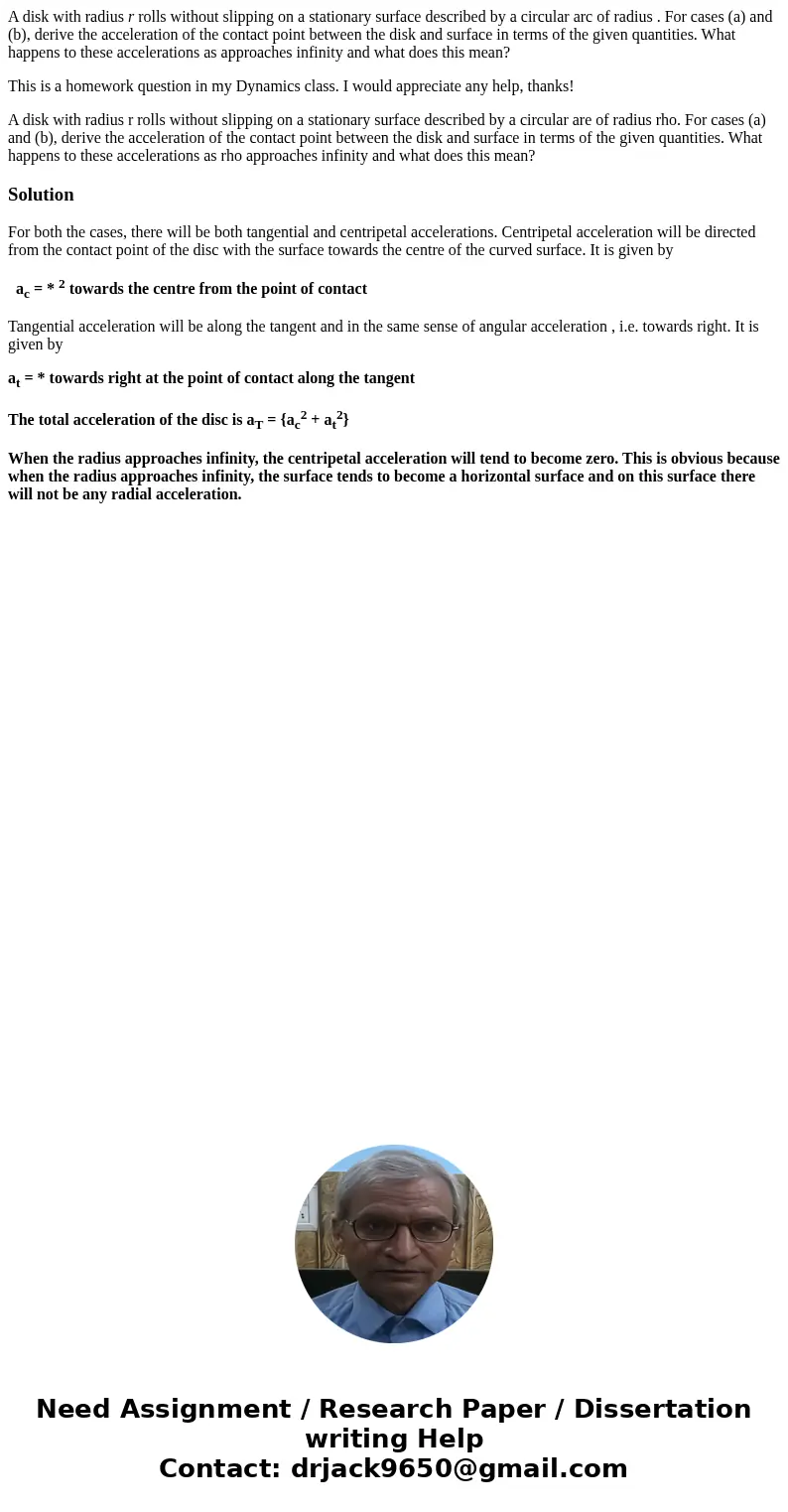A disk with radius r rolls without slipping on a stationary
A disk with radius r rolls without slipping on a stationary surface described by a circular arc of radius . For cases (a) and (b), derive the acceleration of the contact point between the disk and surface in terms of the given quantities. What happens to these accelerations as approaches infinity and what does this mean?
This is a homework question in my Dynamics class. I would appreciate any help, thanks!
A disk with radius r rolls without slipping on a stationary surface described by a circular are of radius rho. For cases (a) and (b), derive the acceleration of the contact point between the disk and surface in terms of the given quantities. What happens to these accelerations as rho approaches infinity and what does this mean?Solution
For both the cases, there will be both tangential and centripetal accelerations. Centripetal acceleration will be directed from the contact point of the disc with the surface towards the centre of the curved surface. It is given by
ac = * 2 towards the centre from the point of contact
Tangential acceleration will be along the tangent and in the same sense of angular acceleration , i.e. towards right. It is given by
at = * towards right at the point of contact along the tangent
The total acceleration of the disc is aT = {ac2 + at2}
When the radius approaches infinity, the centripetal acceleration will tend to become zero. This is obvious because when the radius approaches infinity, the surface tends to become a horizontal surface and on this surface there will not be any radial acceleration.

 Homework Sourse
Homework Sourse